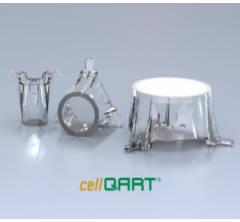What Do You Know About TEER?
May 31, 2021

How often do you or your colleagues perform TEER (Transepithelial-Transendothelial Electrical Resistance) assays in a given week, and how confident are you in your results?
The accuracy of your TEER assay measurements depends on four things:
- Temperature - It’s recommended you perform yours at exactly 37°C.
- Electrode positioning - The lower chamber electrode must touch the bottom of the well and the upper chamber electrode must not touch the membrane.
- Vibrations - Vibrations can alter electrode placement and they cause disturbance of the electric field across the monolayer.
The 4th factor is membrane quality, and there’s now a cell culture insert membrane that undergoes 100% in-line quality control of every segment, making it a revolutionary upgrade to your lab’s TEER assay workflow.
Decide for yourself if it’s right for you and your colleagues.
Share on Facebook
Share on Twitter
Share on Pinterest
Comment(s)
Did you find this article helpful?
0
0
Loading...
Categories
- Most Viewed Blog Articles (5)
- Company News (285)
- Emerging Technologies (64)
- Microbiology and Life Science News (93)
- Water and Fluid Separation News (97)
- Filtration Resources (93)
- Product News (19)
Recent Posts
Archive


![Join Sterlitech at BIO 2024 [Booth #5558]: Exploring the Future of Biotechnology](https://www.sterlitech.com/media/blog/cache/300x200/magefan_blog/b4.jpeg)



